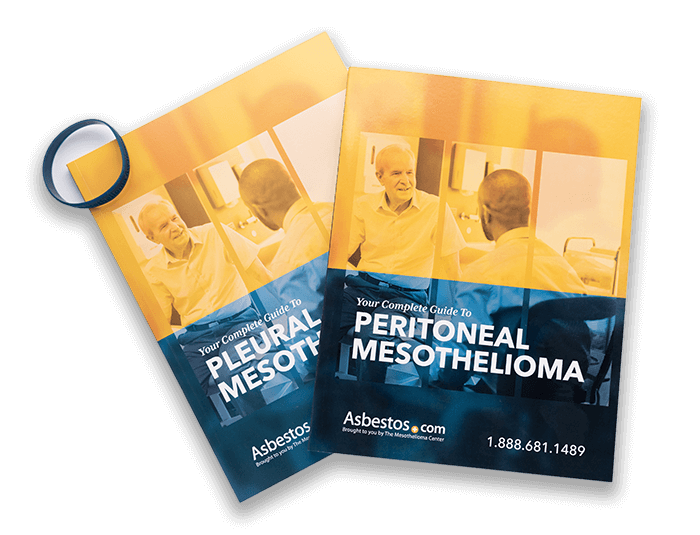Asbestos in Colorado
While Colorado's naturally rocky, mountainous landscape hosts many deposits of naturally occurring asbestos, most of the state's asbestos threats stem from industrial job sites. Work settings such as factories, power plants, refineries and mines were among the state's major asbestos exposure threats.

Written by Michelle Whitmer | Scientifically Reviewed By Arti Shukla, Ph.D. | Edited By Walter Pacheco | Last Update: July 16, 2024
Asbestos Exposure in Colorado
Sources of asbestos exposure in Colorado include natural deposits and a wide range of worksites.
Industrial sites relied on asbestos products until the 1980s. Examples include Conoco Oil Refinery and Hudson Energy Company. Asbestos insulation was a common component of these plants. They utilized the fibers to protect against fires caused by overheated machinery.
Although asbestos helped reduce the risk of fire, it posed its own set of health risks to employees. Exposure may cause illnesses such as mesothelioma and lung cancer. If disturbed, asbestos deposits in Colorado also pose a serious risk.
The Calumet Mine, Hecla No. 2 Mine and the CF&I Company Mine were all located on amphibole asbestos deposits. Mines such as the Dolores Co. Falcon Mine and the Iron King Mine were home to tremolite asbestos. None of these mines produced asbestos. But mining of the primary mineral disturbed the asbestos.
In March 2021, the Denver Parks & Recreation department responded to an exposure threat. Damage caused by sledders exposed asbestos in Ruby Hill Park. The park sits on top of an old landfill containing asbestos waste.
Rather than walking to the top of the park, an estimated 200 cars drove to the top, damaging sod covering the asbestos waste. The department said the sledders were likely exposed to asbestos. It will cost around $100,000 to mitigate the damage.
Colorado’s Occupations and Environmental Areas at Risk
Factory and plant workers in Colorado faced many occupational asbestos hazards. Some workers directly handled asbestos while manufacturing products such as roofing compounds. Repairing high-heat machinery that relied on asbestos insulation indirectly exposed workers.
Colorado’s mining industry also placed workers at risk for inhaling asbestos. Miners may have inhaled asbestos while extracting iron, limestone, gold, coal or other natural resources. Asbestiform minerals also exposed miners. Examples include ferrian winchite and asbestiform tremolite in the Salt Creek vermiculite deposits.
Job Sites and Environmental Areas at Risk
Workers at certain Colorado-based companies face elevated risks of developing mesothelioma. Industries known for exposure include construction, power generation and manufacturing.
Examples include the Centel Corporation, Schmidt Incinerators and Utilicorp.
Other Job Sites with Known Asbestos Exposure:
- Colorado Springs Public Utilities
- Drive Train Industries
- Hensel Phelps Construction Company
- Poole Construction Company
- Nixon Power Plant
Areas in Colorado contain several types of asbestos and asbestiform minerals. Some of these areas include the Caribou Mine and the Monarch deposit in Boulder.
Other areas where asbestos is present include:
- Cree Camp
- Milliken Occurrence, La Plata District
- Sedalia Copper Mine
- Sloan Diatremes
- Snowy Range Mine
Western Minerals Company Plant
The Western Minerals Company Plant processed vermiculite ore for use in industrial applications. It operated in Denver, Colorado, between 1867 and 1990.
Some of the vermiculite received at the Western Minerals Plant came from W.R. Grace’s vermiculite mine in Libby, Montana. The ore contained asbestos fibers. The Denver site processed up to 81,797 tons of this vermiculite. Airborne asbestos exposed employees during the vermiculite processing years.
The U.S. Environmental Protection Agency took soil samples that revealed asbestos remained in some of the Denver site’s soil. The current owners have covered much of the soil with buildings and asphalt parking areas. The EPA determined that it is free from air contamination. The site is now home to the Minnesota Corn Processors facility.
Three other unnamed processing plants in Florence, Lamar and Greeley processed up to 3,900 tons of Libby vermiculite.
Estes Power Plant
Estes Power Plant in Larimer County used asbestos insulation for the plant’s high-heat operations. As a result, many construction materials and equipment on site contained the fibers.
In January 2011, the U.S. Department of the Interior requested bids from companies to remove asbestos at the plant. Workers removed more than 1,800 square feet of asbestos plaster. They also removed 250 linear feet of chrysotile asbestos-laced HVAC duct wrap. Asbestos spray was also used on stabilizers and sheeting in the plant. The state estimated renovations cost about $500,000.
This Page Contains 9 Cited Articles
The sources on all content featured in The Mesothelioma Center at Asbestos.com include medical and scientific studies, peer-reviewed studies and other research documents from reputable organizations.
- The Denver Channel. (2021, March 17). Sledders who drove to top of Ruby Hill Park 'very likely' exposed asbestos after tearing up sod. Retrieved from https://www.thedenverchannel.com/news/local-news/drivers-skirt-barricades-tear-up-sod-expose-asbestos-while-getting-to-sled-run-at-ruby-hill-park
- Agency for Toxic Substances and Disease Registry. (2009, January 20). Fact Sheet Denver, CO. Retrieved from http://www.atsdr.cdc.gov/asbestos/sites/national_map/fact_sheets/denverco.html
- Federal Business Opportunities. (2011, January 14). Estes Powerplant Asbestos Abatement, Colorado-Big Thompson Project, Colorado. Retrieved from https://www.fbo.gov/index?s=opportunity&mode=form&tab=core&id=2e80698b68edb30f777fc0ac948915b0
- United States District Court, D. Colorado. (1986, December 8). Gibson v. Armstrong World Industries, Inc. Retrieved from https://www.leagle.com/decision/19862186648fsupp153811955
- Mindat.org. (n.d.). Colorado, USA. Retrieved from http://www.mindat.org/loc-3585.html
- U.S. Court of Appeals, Tenth Circuit. (1992, March 23). Adams-Arapahoe School District v. GAF Corporation et al. Retrieved from http://law.justia.com/cases/federal/appellate-courts/F2/959/868/220436/
- U.S. Court of Appeals, Tenth Circuit. (1992, March 23). Adams-Arapahoe School District v. United States Gypsum Company et al. Retrieved from https://law.resource.org/pub/us/case/reporter/F2/958/958.F2d.381.91-1046.html
- U.S. Geological Survey. (2014, May 21). Mineral Resources On-Line Spatial Data. Retrieved from http://mrdata.usgs.gov/asbestos/asbestos.php?mineral=tremolite
- Van Gosen, B. (2007). Reported Historic Asbestos Mines, Historic Asbestos Prospects, and Natural Asbestos Occurrences in the Rocky Mountain States of the United States (Colorado, Idaho, Montana, New Mexico, and Wyoming. U.S. Geological Survey. Retrieved from http://pubs.usgs.gov/of/2007/1182/pdf/Plate.pdf







